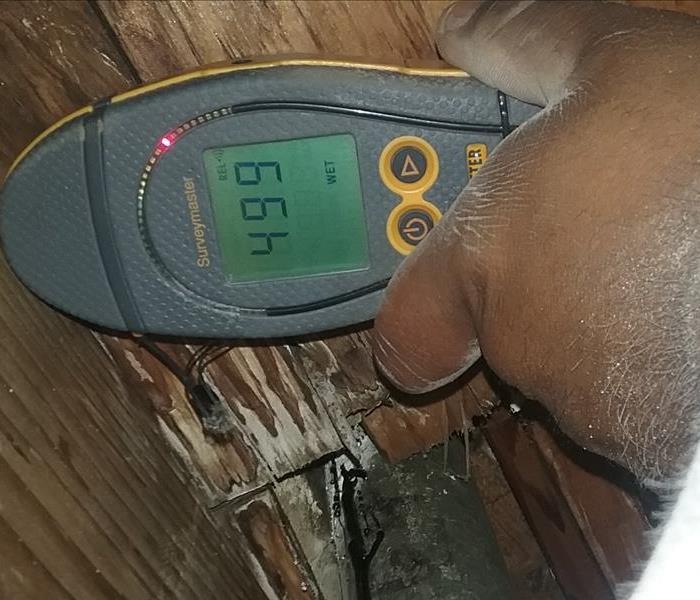A Moldy Smell
3/1/2019 (Permalink)
For mold to grow in your house it needs a moisture source. It could be coming from the outdoors, indoors or both.
Outdoor sources include:
- Water leaking caused by clogged gutters and drains. It might not be visible to your eye, but leaks can wet walls and attic spaces so that mold grows unseen.
- Leaks from improperly flashed windows, doors, decks, and roofs. These areas can also allow water to seep into wall cavities.
- If the ground around the house isn't sloped enough to drain surface water away, leakage can make the adjacent rooms damp and increase humidity levels in the house.
Indoor moisture sources include:
- Plumbing leaks behind walls or under sinks.
- Condensation. Over winter, moist indoor air can cause condensation and ice to form on cold window panes and can do the same, unseen, inside cold wall cavities. Moist air makes its way from the indoors into the wall cavity through a variety of routes, including electrical outlets and light fixtures.
Look for evidence of moisture or possible moisture sources in the areas where you smell mold.
- Lift carpet and move furniture and drapes to look for signs of moisture or mold staining.
- Check the attic and or basement for signs of leaks or mold.
- Outdoors, look for warped, bulging siding, premature peeling of paint or stained and cracked stucco or brick. Pay particular attention to areas around windows, doors, and decks and under roof valleys
If you find evidence of water damage or leaks, determine the cause and rectify it so your remediation company can come and properly clean it.






 24/7 Emergency Service
24/7 Emergency Service
